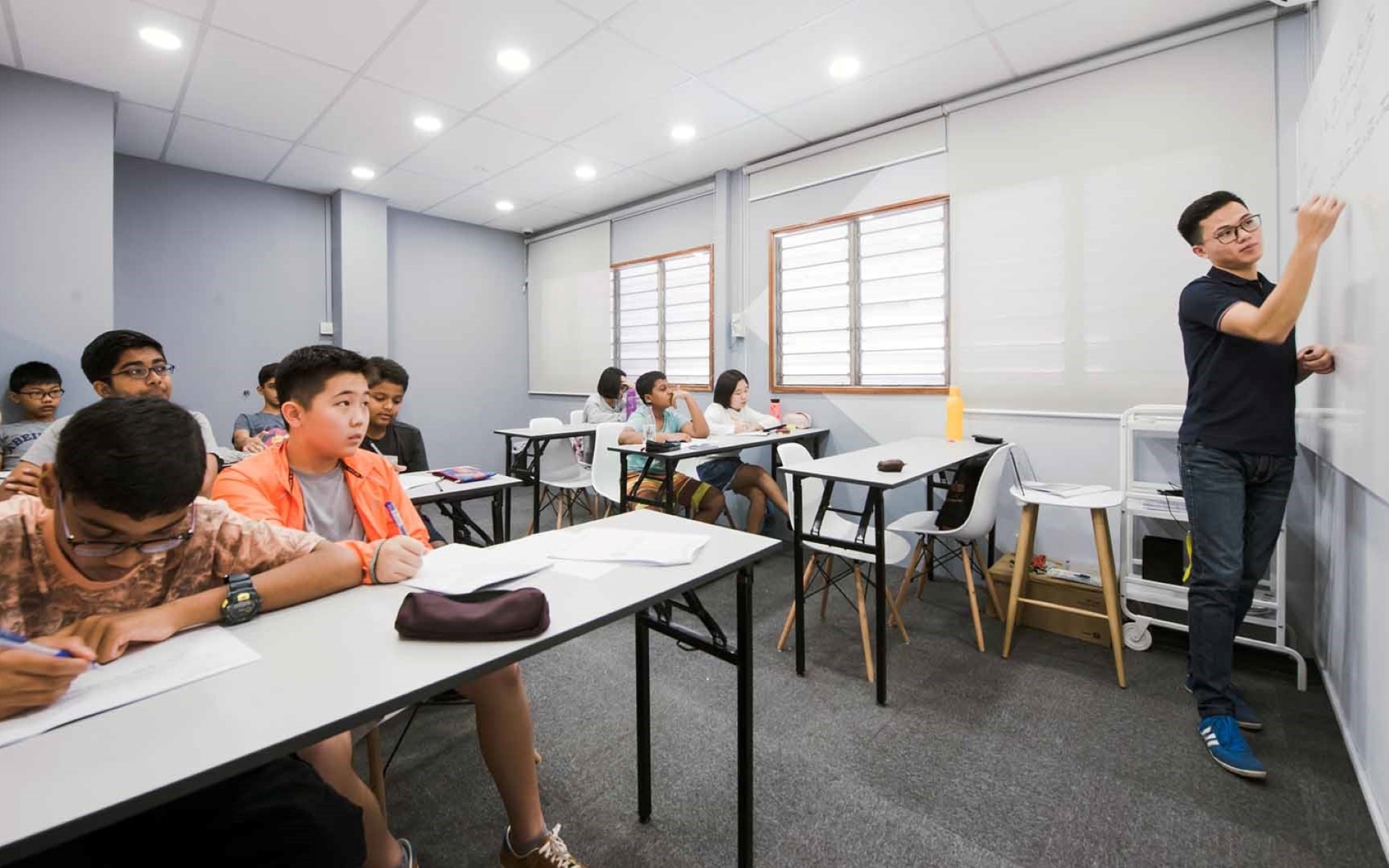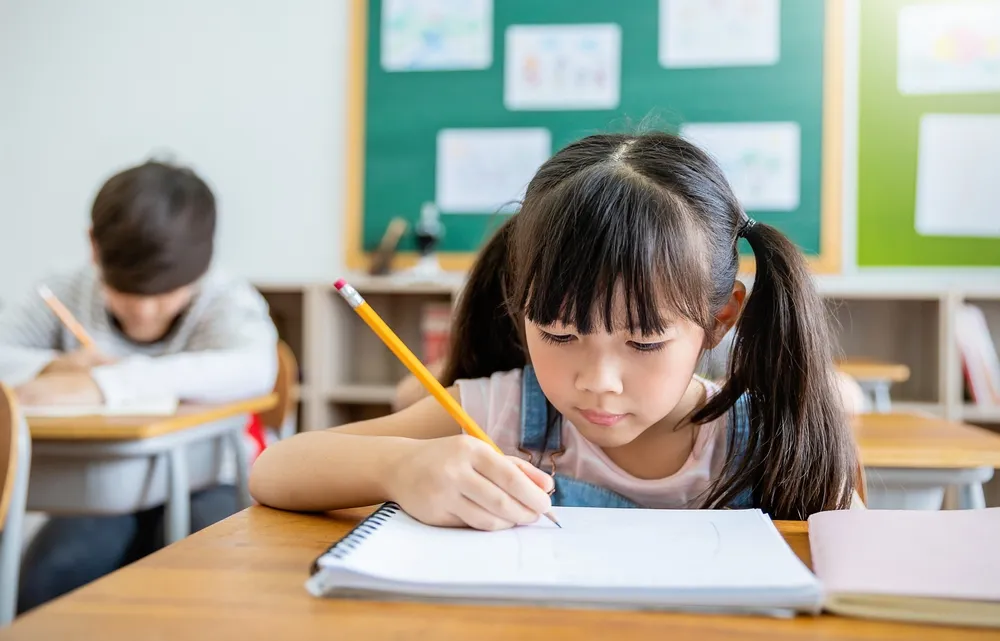Transitioning from PSLE Maths to Secondary Maths is a significant step in your child’s academic journey. This phase involves adapting to new learning expectations, a more complex curriculum, and a deeper level of critical thinking. To help your child succeed, preparing them for these changes is essential.
With effective strategies and support, including Secondary Maths tuition in Singapore, your child can approach this transition with confidence and readiness. This guide delves into the key differences, common challenges, and actionable strategies to help students transition from PSLE to Secondary Maths seamlessly.
Understanding the Difference Between PSLE Maths and Secondary Maths
The leap from PSLE Maths to Secondary School Maths presents a significant shift in curriculum, topical complexity, and depth, often challenging students to adapt quickly to new concepts and problem-solving approaches. This transition is a critical phase, as it lays the groundwork for advanced mathematical skills essential for higher education and real-world applications. Recognising these differences allows parents and students to navigate the transition more smoothly and proactively.
Here are the key curriculum changes:
Primary School Maths
The Primary School mathematics curriculum in Singapore is designed to build a strong foundation in mathematical concepts and problem-solving skills. Key topics typically covered may include:
1. Numbers and Operations
- Whole numbers (place value, addition, subtraction, multiplication, division)
- Fractions (understanding parts of a whole, addition, subtraction, comparison)
- Decimals (place value, operations with decimals)
- Percentages (basic conversions and calculations)
- Factors and multiples
2. Measurement
- Length, mass, and volume
- Time (reading clocks, duration, and elapsed time)
- Money (basic transactions and calculations)
- Area and perimeter of simple shapes
3. Geometry
- Basic shapes (2D and 3D shapes and their properties)
- Symmetry and patterns
- Angles (basic identification and measurement)
4. Data Analysis
- Reading and interpreting data from pictograms, bar graphs, and tables
5. Algebra (Basic)
- Simple number patterns
- Introduction to simple equations in upper primary syllabi
6. Word Problems
- Application of mathematical concepts to solve real-world problems
- Focus on heuristics like model drawing and systematic listing
Secondary School Maths
Secondary School Maths starts with a focus on foundational topics in S1 and S2, followed by a division into Elementary Mathematics (E-Maths) and Additional Mathematics (A-Maths) in S3 and S4. These distinctions reflect the increasing complexity of mathematical concepts and the growing emphasis on critical thinking and problem-solving skills.
Secondary 1 and 2: Foundational Learning
The Secondary 1 and 2 Mathematics syllabus builds upon the Primary Mathematics syllabus and can be broadly divided into three categories:
1. Numbers and Algebra
- Deepening knowledge of numbers, ratios, percentages, rates, speed, algebraic expressions, graphs, and equations.
2. Geometry and Measurement
- More advanced concepts such as angles, mensuration, and Pythagoras’ Theorem.
3. Statistics and Probability
- Analysing and interpreting data using tables, charts, and graphs.
Students are introduced to mathematical problem-solving in real-world contexts, laying the groundwork for applied knowledge in higher education and beyond.
Unlike in primary school, where concepts are introduced gradually, secondary school Maths is taught in distinct topics. This modular approach requires students to develop stronger organisational and independent learning skills to excel.
Secondary 3 and 4: Introduction to E-Maths and A-Maths
In Secondary 3, students are introduced to Additional Mathematics (A-Maths), an elective subject for those pursuing more advanced mathematical studies. The key distinction between E-Maths and A-Maths is as follows:
1. Elementary Mathematics (E-Maths)
- Covers fundamental mathematical concepts applicable to daily life.
- Includes practical applications such as instalments, interest calculations, and GST, preparing students for everyday scenarios.
2. Additional Mathematics (A-Maths)
- Focuses on more complex concepts such as polynomials, logarithms, calculus (differentiation and integration), and advanced trigonometry.
- Equips students with tools for research and problem-solving in fields like Physics, Biology, and Economics, fostering interdisciplinary understanding.
Assessment Differences
The nature of assessments changes significantly from PSLE to Secondary Maths:
- PSLE Exams: Primarily feature straightforward, single-concept questions that require procedural accuracy.
- Secondary Maths Exams: Feature multi-step problems that integrate various concepts, requiring students to think critically and solve problems creatively. Abstract reasoning and time management become essential skills, particularly in A-Maths.
Secondary Maths tuition in Singapore can be instrumental in helping students practice these exam-style questions and develop the analytical skills needed to excel.
Common Challenges in Transitioning to Secondary Maths and How to Overcome Them
The jump from PSLE Maths to Secondary Maths marks a pivotal change in a student's academic journey. This transition can be challenging, but understanding the difficulties and taking proactive steps can help students thrive.
1. Adjusting to Conceptual Learning
Secondary Maths demands deeper critical thinking and problem-solving, moving beyond the procedural methods taught in primary school. Lessons often involve abstract concepts that require independent thought and application. For students accustomed to step-by-step instructions, this shift can feel disorienting. Teachers and parents can support this adjustment by encouraging active class participation, group discussions, and open-ended problem-solving exercises.
2. Navigating Increased Topic Complexity
Key topics like algebra, trigonometry, and advanced geometry are introduced faster, requiring students to grasp foundational principles quickly. Unlike the relatively straightforward problems in PSLE Maths, secondary topics often involve multi-step solutions and abstract reasoning. A consistent schedule for revising foundational concepts, paired with regular practice of complex problems, can help build confidence and competence.
3. Managing a Heavier Academic Load
Secondary school students must juggle a broader range of subjects and extracurricular activities. Maths assignments often require consistent effort over time to reinforce learning. Implementing structured routines and setting priorities through tools like planners can help students balance their workload effectively.
4. Building Resilience and Confidence
It’s common for students to feel discouraged when they struggle with challenging topics. This can lead to self-doubt, further affecting their performance. Creating a growth-oriented environment that emphasises effort over outcomes can boost resilience. Pairing this with targeted support, like private tuition or online tutorials, can provide tailored guidance to address weak areas.
5. Seeking Help When Needed
Encouraging students to seek help when they face difficulties is essential. Whether consulting their teachers, forming study groups, or enrolling in supplementary tuition, timely assistance can make a significant difference in their understanding and performance.
By identifying and addressing these challenges early, students can easily navigate Secondary Maths, developing the analytical skills and confidence needed for academic success. For additional support, consider enrolling in Secondary Maths Tuition helmed by experienced teachers who can tailor guidance to each student’s needs.
Why Choose Terry Chew Academy for Secondary Maths Tuition in Singapore
When supporting your child’s transition from PSLE Math to Secondary Maths, Terry Chew Academy is a trusted partner for parents and students.
What Sets Terry Chew Academy Apart?
- Experienced Tutors: Our tutors are experts in bridging the gap between PSLE and Secondary Maths, making advanced topics more accessible and less intimidating.
- Small Class Sizes: This ensures a focused learning environment and individual feedback.
- Comprehensive Resources: We provide well-structured notes, targeted exercises, and revision to enhance understanding.
Terry Chew Academy’s Secondary Math Tuition in Singapore equips students with the skills and confidence they need to succeed in secondary school and beyond.
Get the Right Support
The transition from PSLE Maths to Secondary Maths introduces more significant challenges requiring higher reasoning and complex problem-solving levels. With the right preparation and support, students can rise to these demands and develop critical thinking skills and a deeper understanding of mathematics, equipping them for future success.
For parents who completed their secondary education years ago, the curriculum may feel unfamiliar and overwhelming, especially with the introduction of complex topics like Additional Mathematics. For those who never studied A Maths, supporting their child’s learning can seem almost impossible, adding to the challenge of navigating this crucial academic phase.
For parents seeking expert guidance, Terry Chew Academy offers exceptional Secondary Maths tuition in Singapore. Our tailored approach ensures your child builds a strong foundation and excels in this new academic phase. Contact us today to learn how we can play a pivotal role in your child’s success in this transition!

 Like us
Like us



